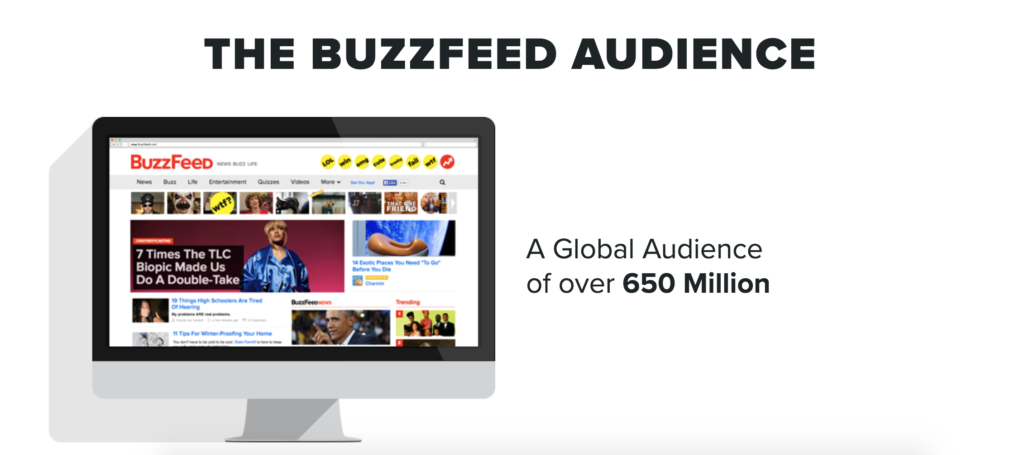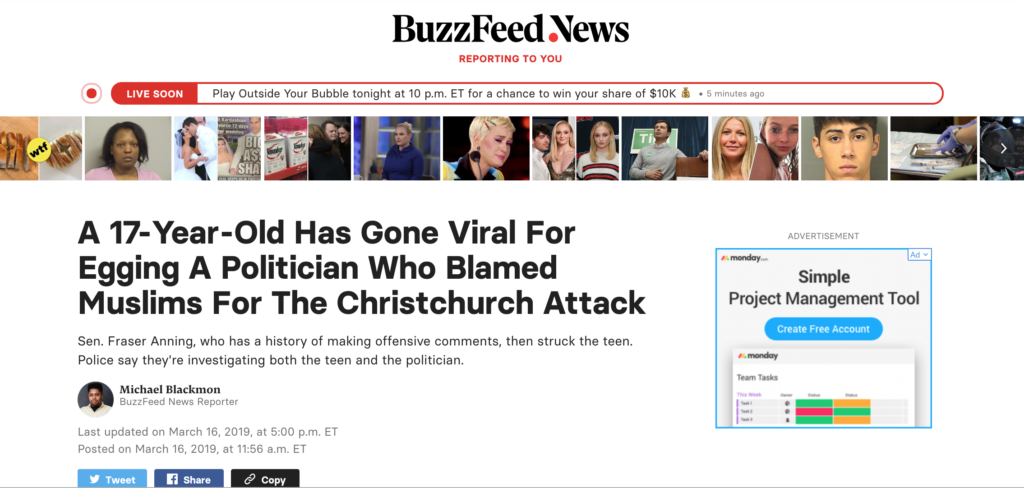
Back in the day, news reporters had to use a pen and paper to write stories. To gather sufficient information and data for their work, it would require fieldwork over a length of time. Writers never really knew what their audiences thought of their stories, unless a letter was addressed to the editor.
Today, the advancement in technology has allowed reporters to write a story as soon as an interview is over. They can even cover a story as an event is unfolding, making live written news reporting a possibility. Data collection has become easier with the use of new tools, and writers are able to predict and understand what their audiences want with precision.
In the 1990s to the early 2000s, as journalists began to have access to the internet, and consumers would become more reliant on their mobile phones, the mediums and techniques of storytelling would change the course of the journalism we know today. (Bradshaw, P., 2018).
Here, I analyse the reportage of two news media outlets, taking a look at the work of the New York Times’ article“Australian Senator Hit With Egg After Blaming Immigration for Mosque Attacks,”and Buzzfeed News’ article “A 17-Year-Old Has Gone Viral For Egging A Politician Who Blamed Muslims For The Christchurch Attack.”
History
The New York Times is one of the oldest running and most regarded publications in the industry, with 125 Pulitzer Prizes under their belt, overshadowing the work of their nearest competitor. Founded in 1851, it is currently run by Arthur O. Sulzberger, Jr., and is a publicly traded company through a dual-class share structure.
The brand has successfully made the shift from a solely print medium into a multi-platform hub. They launched their online website in 1995, and in 2011, they successfully installed the metered paywall — allowing readers five free articles a month (cut down in December 2017 from an original limit of 10) before asking readers to subscribe in order to read more. (Bradshaw, P., 2018). This metered paywall is still in use and is constantly promoted by the Times on their website today.
The New York Times digital website claims to be able to reach 125 million unique readers worldwide, most of whom are accessing the website through their mobile phones. As of recent, a third of their online users are considered millennials.

According to the insight analytics company Alexa, the Times ranks 119 in the world, with 65.8% of their readers coming from the United States. Alexa concludes the rating based on a combination of the number of daily visitors and page views.
An average visitor on the New York Times would look at 2.24 pageviews per visit, and spend 3.34 minutes on the site. They have a bounce rate of 63.8 percent.

Buzzfeed on the other hand is a digital-born website that originally focused on churning out viral-type content with a strong pop culture and entertainment slant. It was founded by Jonah Peretti and John S. Johnson III in 2006. It was only in 2011, that Buzzfeed started to cover more news reportage and investigative stories.

Buzzfeed claims to have a global audience of over 650 million worldwide, with over 9 billion content views per month, reaching 3 of 5 U.S. millennials monthly.



According to Alexa, Buzzfeed ranks 286 in the world, with 54.1% of their readers coming from the United States, and 3.2% from Australia. An average visitor spends around 5:54 minutes on site, and looks at 3.59 pageviews. The bounce rate for Buzzfeed is 52.60%.

Looking at these statistics, it is clear that while the New York Times ranks higher in the world, the users of Buzzfeed are more engaged, as the bounce rate is lower, and their readers spend more time on their page as opposed to the readers of the New York Times. It is also evident that Buzzfeed’s audience is made up of a majority of millennials, as opposed to the New York Times whose millennial following is only a third of the total.
The story
The story I am analysing in this case is the egging incident perpetrated by a 17-year-old boy towards Senator Fraser Anning. Mr. Anning was giving an interview to the press, when a boy in the background smashed an egg on his head as a form of protest. Reacting immediately, the senator turned around, slapped the boy in the face twice, and then attacked him.
This event occurred shortly after the Christchurch shooting, in which one of Anning’s comments about the shooting didn’t sit well with people.
The infamous video of the scuffle went viral online. News media outlets were quick to pick up the story.
Ticking off the Basics
In looking at the content produces by both mass media outlets, I use Paul Bradshaw’s BASIC principles for web writing analysis as a lens. This enables us to see how each title has adapted the modern techniques for web writing, and understand where they fall short or become successful in the process.
Buzzfeed vs. New York Times
While there are glaring differences between the two publishing techniques, some of the fundamental standards of news coverage is upheld by both titles. Both Buzzfeed and the New York Times have kept the stories brief, divulging only the basic facts of the incident, and successfully allowing the reader to get a full grasp of the context and implications of the situation within an overview of the facts
Both stories were also published at a timely manner, releasing the story very close to the time when the incident occurred.
However in terms of adaptability and interactivity, Buzzfeed does a particularly better job in utilising the web form to tell a story. They are able to show not just the video itself, but paint a picture about what its effect had on people as well, gathering comments and sentiments from other users online, and showing different videos taken by the perpetuator in the aftermath.


This makes Buzzfeed‘s coverage more adaptable, as they utilise content from many medium and platforms, versus the Times who only put a video as the lone visual medium to accompany the story.
Interestingly enough, the video on the New York Times story plays automatically on the web without being played, whereas the embedded video on Buzzfeed needs to be played by the reader.
What becomes evident in their news coverage is that both media outlets seem to have different objectives or key messages with their work, despite the fact that they are reporting on the same story.
For example with their headlines, Buzzfeed uses interesting keywords that the New York Times does not, such as: “17-year-old-boy” “egging” and “viral.” I feel this was executed due to their heavy millennial audience.

On the other hand the New York Times keeps it simple and formal: “Australian Senator Hit With Egg After Blaming Immigration for Mosque Attacks.”

They SEO keywords in each headline suggest that they expect different search behaviours from their audience, and it is interesting to see how both websites try to predict their audience’s mindsets.
Both articles don’t use subheadings to break up the story, but Buzzfeed successfully breaks up their story with different types of multimedia content. This again makes Buzzfeed‘s work much more scannable than that of the New York Times.
While both articles make a good use of a number of hyperlinks that allow the readers to click to different websites, Buzzfeed‘s article was a lot more interactive, allowing one to click many videos and click through to different social media accounts who are also following the story.
Another main difference between the two websites is that it seems that we are not able to see or make comments on the New York Times story, as opposed to the Buzzfeed story which embeds Facebook comments at the end, so one can see and even join in on the public conversation.
Generation gap
In this case, Buzzfeed is able to create an experience with the reader in its storytelling that is more attuned to the digital medium, and it seems, is quite targeted more towards their youthful audience. They provide more multimedia elements, and are even able to source a variety of different videos from social media to make the story more interactive, such as the close up video of the 17-year-old boy who is seen in a chokehold after the egging incident.

The New York Times does not pick up this video, but does hyperlink into a live Facebook video that captures the incident from a farther angle.

At the same time, it is safe to say that the New York Times’ story isn’t successful in engaging the viewer because of the lack of multimedia elements. They leave a chunk of a story to be told by text. The New York Times could have embedded the content in some of the hyperlinks they used, such as embedding the video on Facebook into their story, or embedding the allegedly offensive screenshot made by Anning into the story, as opposed to having to click to another site.
What’s on mobile
As I am able to view the stories on my phone as well, I tried to compare the experience of reading the stories on the phone versus how it is presented on the web.


Knowing that most users access these websites on their mobile phone, what is interesting to note is that each website has a different objective on the footer of their stories on mobile. Buzzfeed leaves the readers with the opportunity to share the story on Twitter and Facebook, whereas the New York Times encourages the reader to subscribe.
References:
Alexa.com. (2019). Buzzfeed.com Traffic, Demographics and Competitors. Retrieved from: https://www.alexa.com/siteinfo/buzzfeed.com.
Alexa.com. (2019). Nytimes.com Traffic, Demographics and Competitors. Retrieved from: https://www.alexa.com/siteinfo/nytimes.com.
Blackmon, M. (2019). A 17-Year-Old Has Gone Viral For Egging A Politician Who Blamed Muslims For The Christchurch Attack. Buzzfeed News. Retrieved from: https://www.buzzfeednews.com/article/michaelblackmon/egg-boy-fraser-anning-new-zealand-christchurch-mosque-attack?bfsource=relatedmanual.
Bradshaw, P. (2018). Histories, futures and the changing business and technologies of online journalism. In Online Journalism Handbook: Skills to survive and thrive in the digital age (pp. 5–50). Routledge.
Eldridge, S. A., & Franklin, B. (2017). The Routledge companion to digital journalism studies. London ; New York: Routledge.
Karasz, P. (2019). Australian Senator Hit With Egg After Blaming Immigration for Mosque Attacks. The New York Times. Retrieved from: https://www.nytimes.com/2019/03/16/world/australia/australia-anning-egg-new-zealand-shooting.html.




Be the first to comment